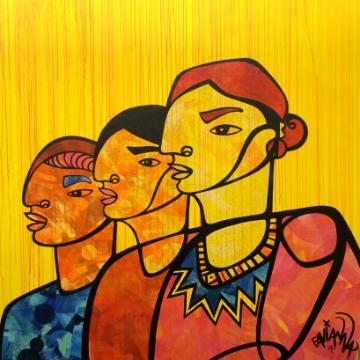
Gendered Theologies and the Common Good: Discerning Spiritual Care Pathways with Transgender and Intersex People
Excerpt from Fall 2017 Santa Clara Lecture1
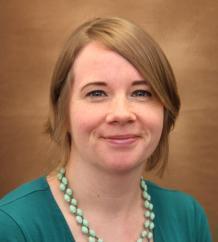
By Susannah Cornwall
Senior Lecturer in Constructive Theologies
University of Exeter
In this lecture I will consider the place of spiritual care, itself increasingly marginalized in the National Health Service (in the UK), particularly for transgender people, who might be considered a niche or a marginal group, and I will point to the necessity of affirming and compassionate theologies around transgender and the emerging work of transgender Christians and their allies. Later in the lecture I will move to considering how understandings of the common good play out in another area of gender medicine, which involve the decisions made around intersex children and their health care.
Transgender people experience a disjunction between their physical sex assigned at birth and their gender identity (their sense of being a man or woman). Some seek hormone therapy or various physical surgeries to bring their body more into line with their gender identity. Others, because of choice or necessity (e.g., lack of access to funding for medical intervention), live in their affirmed gender identity without undergoing any physical alterations. In the UK, the average age for beginning gender transition is 42. This is significant, as by their 40s most people are well-established in their adult lives and may well have spouses, children, and visible public roles in their communities. Transition is usually something they have considered long and hard. Weighing up goods in this context therefore also means awareness of the possible challenges posed to others who have felt invested in lives and relationships with people who transition. This is where Mark Yarhouse, Vaughan Roberts, Andrew T. Walker, and other recent evangelical commentators on transgender are clearly motivated by compassion, but they may be unreflective about the harm that a closed binary system does to the rest of us, not just to trans people.
Theological responses to transgender from the late 20th century sometimes focused on biblical texts, such as those from Deuteronomy and Leviticus, which outlaw, for example, women wearing men’s apparel, offering animals with bruised or crushed testes as sacrifices, or admitting to the assembly of the Lord anyone whose penis has been cut off. As I’ve discussed at more length elsewhere, such texts appear to be at least as much about disability and concerns about preserving the community by ensuring the continued possibility of procreation and markers of inclusion, e.g., male circumcision, as they are about gender and sex per se. Furthermore, there is a counter stream within the biblical texts themselves that points to a community in which those with torn, crushed, or excised genitals—notably, eunuchs—are not excluded, but included as full members. We might point to narratives such as Acts 8 (the story of the Ethiopian eunuch, baptized with no mention of his physical difference); Jesus’ words about eunuchs from birth, those made eunuchs by others, and those who make themselves eunuchs for the sake of the kingdom in Matthew 19 (which some interpreters understand as including present day transgender and intersex people); and Isaiah 56:1–8, an example of a biblical pun, where we are told that eunuchs will be given “a name better than sons and daughters, an everlasting name which will not be cut off.”
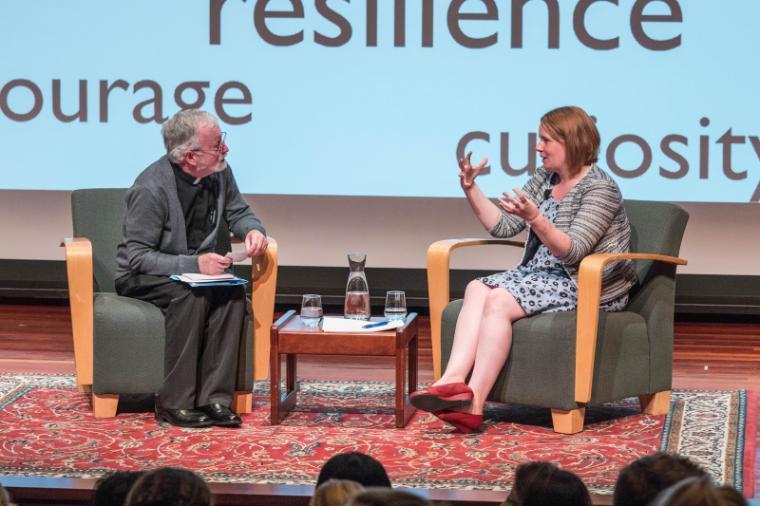
Dr. Susannah Cornwall engages in dialogue with Professor William O’Neill, S.J., (Jesuit School of Theology) on the spiritual and pastoral care needs of transgender and intersex persons.
Those who have had theological reservations about transgender have often started from the conviction that human bodies and identities have a certain “givenness” or directedness as created by God, and that there are only certain things it is legitimate to do to and be in them. The British evangelical ethicist Oliver O’Donovan holds that “To know oneself as body is to know that there are only certain things that one can do and be, because one’s freedom must be responsible to a given form, which is the form of one’s own experience in the material world.”2 Beyond this, there are concerns about whether gender transition tends to lead to, and perhaps to mask, same-sex relationships, as well as pastoral anxieties about the effects for family members of the transitioning person. O’Donovan is particularly concerned about illusion versus reality, and the extent to which surgically-created genitals may be understood as veritably human. Interestingly, O’Donovan, in common with some other theological commentators, outlaws intervention for transgender but has no problem with it for intersex (people who are born with an unusual physical sex). Their argument is that where physical sex is atypical it is appropriate to intervene to clarify it, but that this is not true for gender identity.
Physical sex is the irreducible “given” thing that must not be changed for transgender people, yet it is fine to alter it for intersex people (because of the assumption that intersex already represents a deviation from God’s intention). Those who rail against transgender interventions because they are “unnatural” may not feel so exercised about organ transplants, cochlear implants, laser eye surgery, prosthetic limbs, or a host of the other ways we intervene to augment our bodies—perhaps because we tend to understand sex and gender as more fundamental than other aspects of our bodiliness. Yet as I have argued at length elsewhere, the inconsistency in responses to transgender and to intersex suggests that something more is going on. Whilst opponents to transgender intervention often hold that this is because human embodiment and animality are irreducible and should not be eroded—often because of a good Christian commitment to concreteness, context, and incarnation—responses to intersex hint that there is something else underlying appeals to bodily integrity, and that bodies themselves may need to be brought into line with a more binary-gendered than binary-sexed assumption about what “true,” “divinely-intended” human life actually looks like. If binary gender is grounded in binary sex, what’s the rationale for arguing that even people who do not have a clear binary sex must also have a clear binary gender?
But significantly, many transgender people also appeal to “givenness,” in this case the irreducibility of their gender identity, which they too often understand as divinely ordained. Several transgender Christian clergy, including Carol Stone, Rachel Mann, Sarah Jones, and Justin Tanis, have written and spoken of the deep and intertwined relationship between their vocation to ordained ministry and their calling to live out their lives in the gender they have always understood themselves to be. Tanis says, “I look at my experiences of gender as the following of an invitation of God to participate in a new, whole, and healthy way of living in the world—a holy invitation to set out on a journey of transformation of body, mind, and spirit.”3
Spiritual Care for Transgender People
Pastoral and spiritual care for transgender people might, then, usefully be understood as accompaniment across all stages of their lives, including before, during, and after any public gender transition. Such spiritual care may be an easy sell to those of us already invested in the place of faith and the supernatural in everyday life, but in discussions about what should or could be provided by stretched health care systems, this aspect of the common good is not taken for granted.
In a context where more and more people, in Britain at least, identify as having “no religion,” it may seem like a niche interest for an already stretched health service. However, more broadly, spirituality is understood as referring to the whole person and the package of their physical, emotional, mental, and social well-being, particularly in the sense of something belonging to something larger than what we encounter in everyday life, whether or not they follow a particular religion.
If we are interested in negotiating goods, and weighing up what constitutes the common good, we will be interested both in what is good for communities as well as individuals, but also in what is commonly good for the different elements making up any given individual. So, we might say, giving space to spirituality in health care is giving space to acknowledgement that the person is a whole person, living in a community network, and is more than the sum of their body parts. Research on health care chaplaincy has demonstrated the importance of spiritual well-being for mental and physical health—and religious involvement is positively correlated to well-being. Good health care providers already know this and do all they can to promote holistic well-being. However, even the best are working within a much-overstretched system and may find they simply have less time and fewer resources than they would like. Anecdotal evidence suggests that a significant proportion of people seeking gender reassignment within the National Health Service (NHS) of England have a personal faith, and that faith and spirituality are impacted by their gender incongruence and transition. For many trans people, a key to good care is being encountered at all junctures as a whole person, not a set of hormones and body parts.
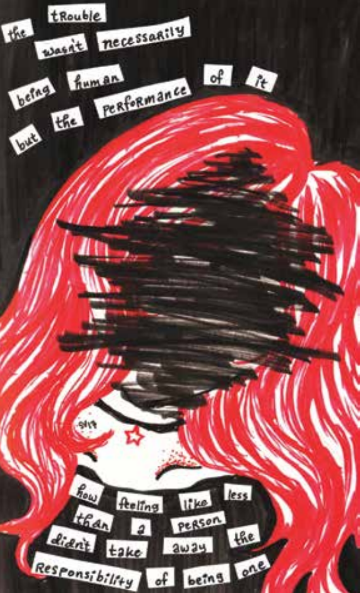
It is for this reason that in partnership with an NHS gender clinic in England, I am formulating a framework for spiritual care for people undergoing gender transition that aims to understand the implications of spiritual care for broader mental and physical well-being, and which understands individuals as existing in community and developing character in community. We’ll be using a virtue-based framework that asks how spiritual care might enable the development of certain virtues among both people who are transitioning and their care team.
Intersex: Theological and Pastoral Considerations
Many parents must make decisions about their children’s medical and health care when they are too young to give consent for themselves. Parents who do not consider themselves experts on medical matters are likely to defer to the judgement of professionals involved with their child’s care, particularly in emergency situations when decisions must be made rapidly. But what happens when debate occurs over the best path of care; when parental decisions have implications for children’s well-being not just in the immediate future but throughout their lives; when parents and doctors disagree about care; or when, in some situations, parents are not the ones best placed to agree to decisions on behalf of their children?
Questions like these are brought into particularly sharp focus in the area of intersex,4 where individuals are born with atypicalities of physical sex such that their bodies cannot be classified as male or female. Their genitals, gonads, chromosomes, hormones, gametes, and so on may vary from those we typically respect to find. An intersex person might have an externally female body but internal testes and XY rather than XX chromosomes. Other intersex people might have XX “female” chromosomes, but a large clitoris that looks and functions more like a penis. And some intersex people have a mix of characteristics: some XX and some XY cells; a testis making sperm and an ovary making eggs; genitalia that do not really look “male” or “female.” Some people go through most or all of their lives never realizing that, for example, they are genetic mosaics with a mix of XX and XY chromosomes, or some “female” tissue alongside their “male” tissue; this might prompt questions about how significant physical sex really is as a marker of identity and ontology, if it is common to not even know about it and to live a perfectly ordinary life. But some differences are more evident from early on. When infants are born with visibly unusual genital anatomy, parents are likely to have to make decisions about their care soon after birth. What is best for intersex infants is debated, particularly given criticism of early surgeries by intersex adults and allies since the 1990s. Furthermore, decisions made by doctors/parents in the past may be considered to have been detrimental to the long-term good of the intersex adult. Ethics in this area are, therefore, about the difficult task of weighing up present goods and projected goods, and deciding which and whose goods should be most closely guarded. In this part of the lecture I explore the challenges of balancing goods in these situations.
Christian theological ethics and theological anthropology contain rich and varied discussions surrounding the moral and cosmic significance of human-sexed differentiation. For some commentators, following in the footsteps of theologians like Thomas Aquinas (e.g., the Summa Theologiae II-II, 26, 10), Karl Barth (especially in Church Dogmatics III/1 and III/4, Barth 1958 and 1961), and Hans Urs von Balthasar (especially in Theo-Drama 3, Balthasar 1978), human-sexed relationship is synecdoche of divine-human relationship, and something of the meaning of being human is found in sex itself, particularly as this tends (for these writers, in male terms) to generativity. Barth argued that the way human females were to “follow” and “respond to” human males echoed the way that all humans were to follow and respond to God. To deny the order and procession built into human sex and gender, Barth believed, would be to deny the broader divine order. The problem with this is that it assumes that a hierarchy of genders simply is natural and indisputable, rather than being a social construction that presents its own problems and might actually prevent women, and people with unusual sex-gender configurations, from developing relationships with God in their own right.
In contrast, I suggest that whilst to be human is, irreducibly, to be sexed, human sex does not manifest along only male or female lines, and biological generativity is a frequent but not universal concomitant. Intersex people’s humanity is in no way compromised because their sex is atypical. Rather, intersex is one phenomenon that disrupts the apparent incontrovertibility of clear and binary biological sex as a human characteristic.
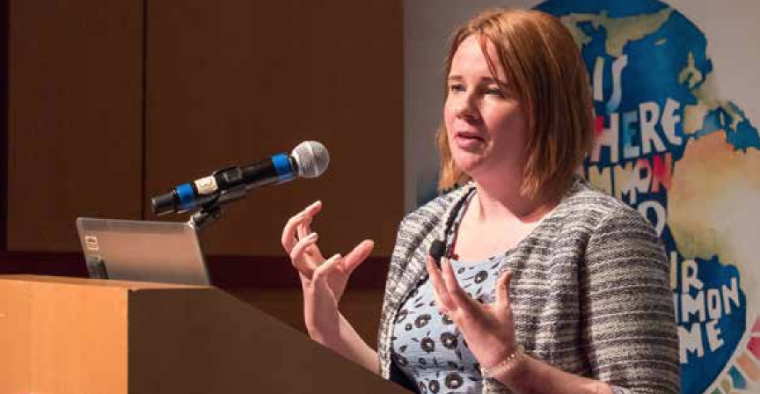
Dr. Cornwall addresses an audience of students, faculty, staff, community members, and pastoral leaders at the Fall 2017 Santa Clara Lecture.
In the past two decades, many intersex activists and other commentators have been vocally critical of the paradigm under which children with atypical genitalia were likely to undergo early “corrective” surgery.” Critics of the model have argued that unusual genitalia are almost never, in themselves, detrimental to physical health, and that there is no need to perform surgery in infancy or early childhood. Those cognizant with this area of ethics will know that at its very heart are tussles over competing goods, and questions about whether justice for society at large is best served by early and compulsory medical intervention for children with unusual morphologies. Intersex activists and critical theorists have argued that secrecy and misinformation surrounding the medical treatment of intersex have exacerbated the idea that intersex is shameful, rather than simply another possible manifestation of human sex. But from the mainstream medical side, at stake was another set of goods: intervening to promote normality; the assumption that children needed to be clearly sexed and appropriately gendered in order to be happy and normal; and, perhaps, a suggestion that allowing unusually-sexed bodies to persist was in some way threatening to the good of society at large. So the question is whether, and when, the goods of promoting “family goals” may be preferred over goods “merely” belonging to individual children. Could a family’s need for normality and avoiding unwelcome attention override an intersex child’s good in having their bodily integrity respected and the broadest possible range of adult sexual outcomes kept open for them? What “family goods” might Christian theologies want to claim, where the “family” is the religious community in which the child is growing up as well as the immediate biological family—or where the moral community can be understood even more broadly, as society at large?
I want to suggest that eschatologically inflected ethics in the context of decision-making on medical care for intersex infants will mean that future goods are considered alongside present ones. If human goods are constructed as those that anticipate and inaugurate an order beyond binaries, and which recognize the importance of provisionality in resisting the maximization of human ideology, then decision-making for intersex and for broader questions of care will acknowledge persons’ future existence in this incoming order, not just their existence within the present one. Taking future goods seriously will usually mean making choices that least limit the future options for the child concerned. We might immediately note an area of tension here between intersex and transgender: after all, some interventions for transgender are also serious and irreversible. Is it not hypocritical to hold that intersex children should have their options kept as open as possible if we do not say the same about transgender? Well, first, as I have noted, most people who transition gender and undergo gender confirmation surgery are already well-established in their adult lives; I have not been speaking today about the ethics of medical interventions for children with a transgender identity. Suffice it to say, though, that irreversible interventions with under-18s remain extremely rare, and that medics tend to advocate delaying making permanent decisions for as long as possible: young trans people may be offered hormones to delay their puberty in order to give them more time to come to understand the momentous nature of some of their decisions. Furthermore, sadly it is the case that not intervening for trans people does not always actually mean, in practice, more options for their futures. In fact, many trans people experience such distress and dysphoria that they self-harm and take their own lives, such that their future in this earthly realm is abruptly curtailed. And for intersex as well as for transgender, of course, avoiding medical intervention (for a limited period or indefinitely) is still an active choice with its own ethical implications. However, seeming to “do nothing” in surgical terms is not necessarily the same as doing nothing whatsoever.
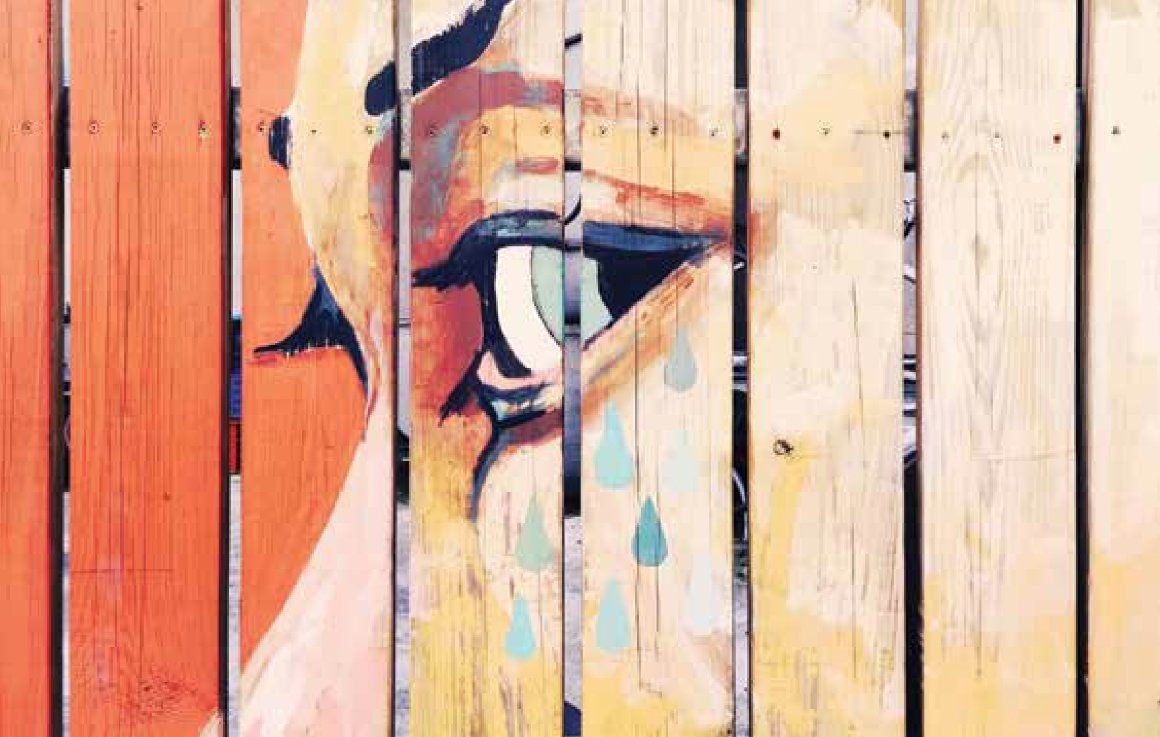
This is why it is so important that we are beginning to hear from intersex adults, not only about their critiques of the early corrective surgery paradigm, but about their experiences of spirituality and self-understanding of their bodies as sites of divine revelation. I have drawn on interviews with intersex Christians in some of my own work:
| I always felt that God made me and that the Bible says that God wove me together in my mother’s womb and has always known me and knows everything about me, so that I felt that I couldn’t be some horrible mistake or some terrible accident. And so that kind of gave me hope ... Certainly when I was younger I would probably have really, really struggled to accept myself except for the fact that I just felt, well, God accepted me, and it just made me feel that there was a purpose to it. It wasn’t just a complete accident. And that was really the biggest thing for me, feeling like, well, God planned it for some reason. And that the Bible tells me that everything works for my good. (Poppy) |
| Of course I scoured the Bible to find out anything to do with intersex and I was thrilled when I discovered that Jesus spoke about it ... What Jesus said about eunuchs ... I thought that was wonderful, yes. And that was the springboard for my faith. I thought, “Jesus knows I exist! I’m not on my own.” Because I thought I was the only one in the world, you see. (David) |
Therefore, in the context of decision-making about intersex infants’ care, and promotion of the common good, an important question is what kind of persons does the community wish to cultivate? What are the virtues and qualities the Christian community wishes doctors, parents, and we ourselves (whether intersex people, or non-intersex people invested in promoting intersex people’s goods) to have? How might such virtues be endorsed or elided in given pathways of care, including spiritual care, for intersex children?
Conclusion
The assumption that sex and gender are clear, binary, fixed, and unchanging underlies much theological teaching on human sexuality. However, transgender and intersex show that sex and gender aren’t always as straightforward as they seem. Sex and gender don’t always “match” in the typical ways; even at a biological level, maleness and femaleness aren’t the only possibilities for human bodies. Theologians interested in human sexuality must therefore think carefully about what transgender and intersex imply. Should transgender and intersex be understood as anomalies, which don’t fundamentally disrupt the model of two distinct and separate human genders which map onto two distinct and separate human sexes as intended by God as part of the orders of creation? Or, alternatively, should the existence of transgender and intersex prompt theologians to reexamine their theological anthropologies, and ask whether theologies that assume a fixed, binary model of maleness and femaleness or masculinity and femininity continue to make sense in light of what we now know about human sex and gender? Theologies that assume everyone is clearly male or female can’t easily accommodate hard cases. Perhaps intersex and transgender are not just exceptions to the rule, but actually mean that Christians should rethink their whole understanding of sex and gender, asking what constitutes a common good that is good for these embodied, divinely-made, and God-imaging people, too. Theological norms grounded in binary maleness and femaleness, and masculinity and femininity as superimposed on them, cannot be absolute or incontrovertible. As Marcella AlthausReid has shown, whilst heterosexual capitalist norms might have been convenient bedfellows for Christianity at certain places and times in its history, its conflation with them must be resisted. Only by retelling and reclaiming “lost” stories about multiple genders, sexes, identities, bodies, and lives can God’s own lack of “annexability” be emphasized.
SUSANNAH CORNWALL is a senior lecturer in constructive theologies at the University of Exeter, UK, and director of EXCEPT (Exeter Centre for Ethics and Practical Theology). She is the author of several books, including Sex and Uncertainty in the Body of Christ: Intersex Conditions and Christian Theology, Controversies in Queer Theology, and Theology and Sexuality. Her newest monograph is entitled: Un/familiar Theology: Reconceiving Sex, Reproduction and Generativity. Dr. Cornwall’s current research project, funded by the Sir Halley Stewart Trust, in partnership with the West of England NHS Specialist Gender Identity Clinic, explores spiritual care pathways for people undergoing gender transition in the National Health Service in England.
Notes
- Susannah Cornwall, “Gendered Theologies and the Common Good: Discerning Spiritual Care Pathways with Transgender and Intersex People,” Santa Clara Lecture, 2016–18 Bannan Institute series, October 12, 2017, Santa Clara University. This essay is an excerpt from the lecture; a video of the full lecture is available online at: scu.edu/ic/media--publications/videolibrary
- Oliver O’Donovan, Transsexualism and Christian Marriage (Nottingham: Grove Books, 1982).
- Justin Tanis, Trans-Gendered: Theology, Ministry, and Communities of Faith (Cleveland, OH: Pilgrim Press, 2003).
- Since the mid-2000s, particularly in medical contexts, intersex has more commonly been known as “DSD” (disorder of sex development). However, this term is controversial, particularly among some intersex groups like UKIA (UK Intersex Association) and OII (Organization Intersex International), which believe it is stigmatizing and figures intersex as pathological. In line with the majority of intersex adults to whom I have spoken, including my own interviewees, I continue to use the term intersex. For further discussion of debates surrounding this terminology, see Ellen Feder, Making Sense of Intersex: Changing Ethical Perspectives in Biomedicine (Bloomington, IN: Indiana University Press, 2014) and Georgiann Davis, “The Power in a Name: Diagnostic Terminology and Diverse Experiences,” Psychology and Sexuality 5.1 (2014): 15–27.
| Economic Justice: Fairness in Context | Home | Gender Justice: Transformation Through Interdisciplinary Collaboration |